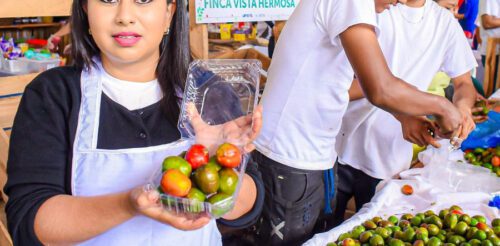Discover the vibrant flavors of El Salvador through its exotic fruits. From the sweet and tangy Jocote to the creamy Anona, this Central American nation offers a tropical paradise of unique and delicious fruits waiting to be enjoyed.
The most exotic fruits of El Salvador are Anonas, Jocotes, Nances, Mamones, Marañones, Guayabas, Zapotes, Paternas, mameys, and Pepetos. Other Popular Salvadoran fruits worth trying are Nisperos, Arrayanes, Granadillas, Almendras, Caraos, and Tamarindos.
El Salvador is a paradise for exotic fruits with peculiar flavors. These fruits are best eaten fresh. But also used to make other tasty items such as candies, preserves, jams, drinks, and artisanal liquor drinks, which are part of El Salvador’s culture.
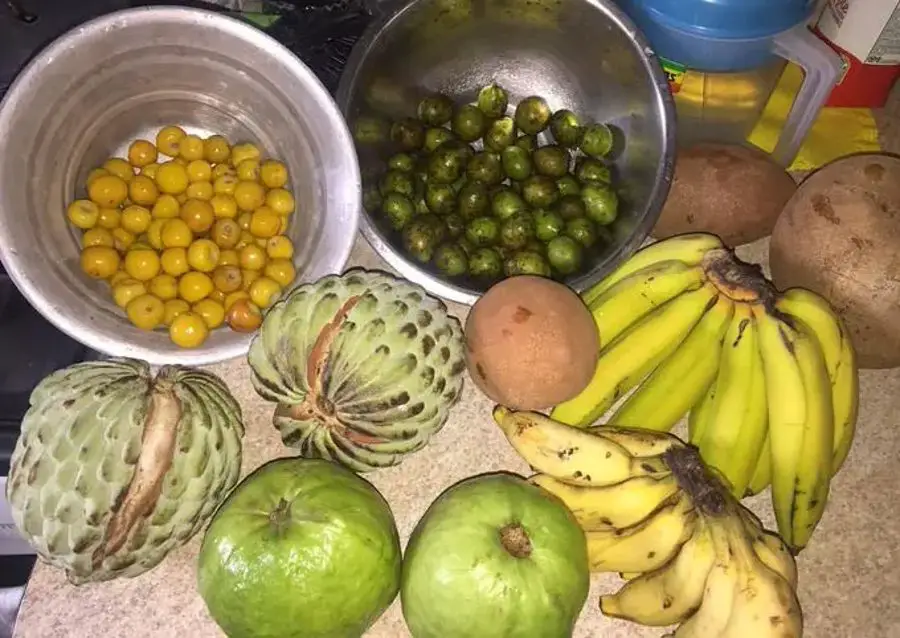
Las Anonas
The Anona is one of the fruits most anticipated by Salvadorans. This seasonal fruit with a sweet flavor is available all over the country from June to August. During this time, getting your hands on delicious Anonas will not be difficult.
The inside of the fruit or edible part is either white or pink. Both taste similar, but the pink fruit is creamier. In addition to tasting good, Anonas are good for your health. This fruit is rich in protein, iron, calcium, vitamins, and carbohydrates.
When choosing Anonas, make sure they are cracked; if there is no crack, they were cut prematurely and will not have any flavor.
This particular fruit has been adopted in Salvadoran cuisine; it is used to make pupusas, tamales, sweets, bread, Atole, and other drinks.
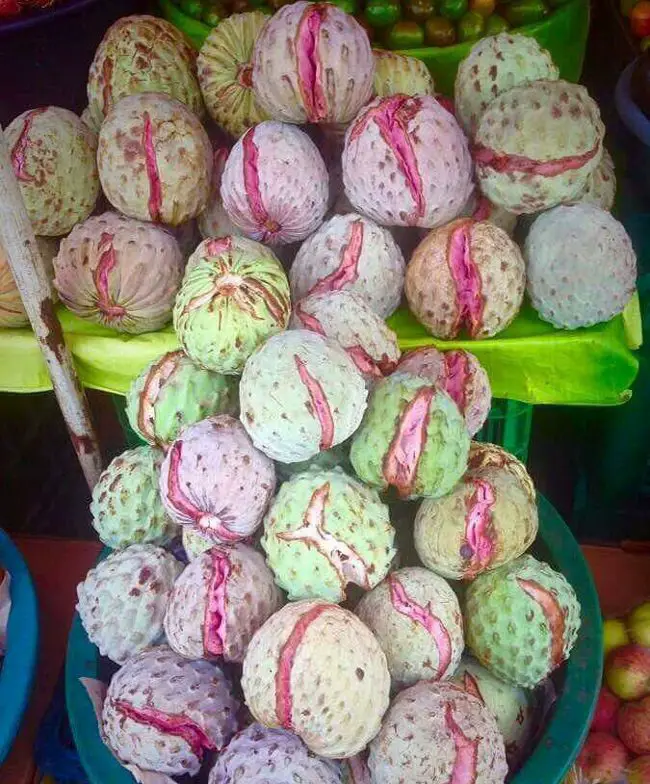
SEE ALSO: 20 Traditional Salvadoran Foods to Try Today. The Culinary Treasures of El Salvador
Los Jocotes
Jocote is one of the most popular Salvadoran fruits; the three popular types are Baron, Azucaron, and Corona. This fruit is usually eaten raw; however, there are different ways to eat and enjoy this popular fruit.
Two popular traditional dishes made with this fruit are Jocotes con Miel (Jocotes and Honey) and Conserva de Jocote. Both dishes are available all over the country during the fruit season.
Jocote Baron
Jocote Baron is the most popular type; its harvest period is at the end of the dry season or Summer, from February to April.
Baron Jocote is also called summer, sour, or red Baron Jocote. The name summer jocote derives from the fact that this fruit can’t survive during the rainy season or winter.
The name sour Jocote originates from its taste. When eaten unripe, this fruit will have an acidic taste. When ripe, this Jocote has a reddish color and a sweet-sour taste.
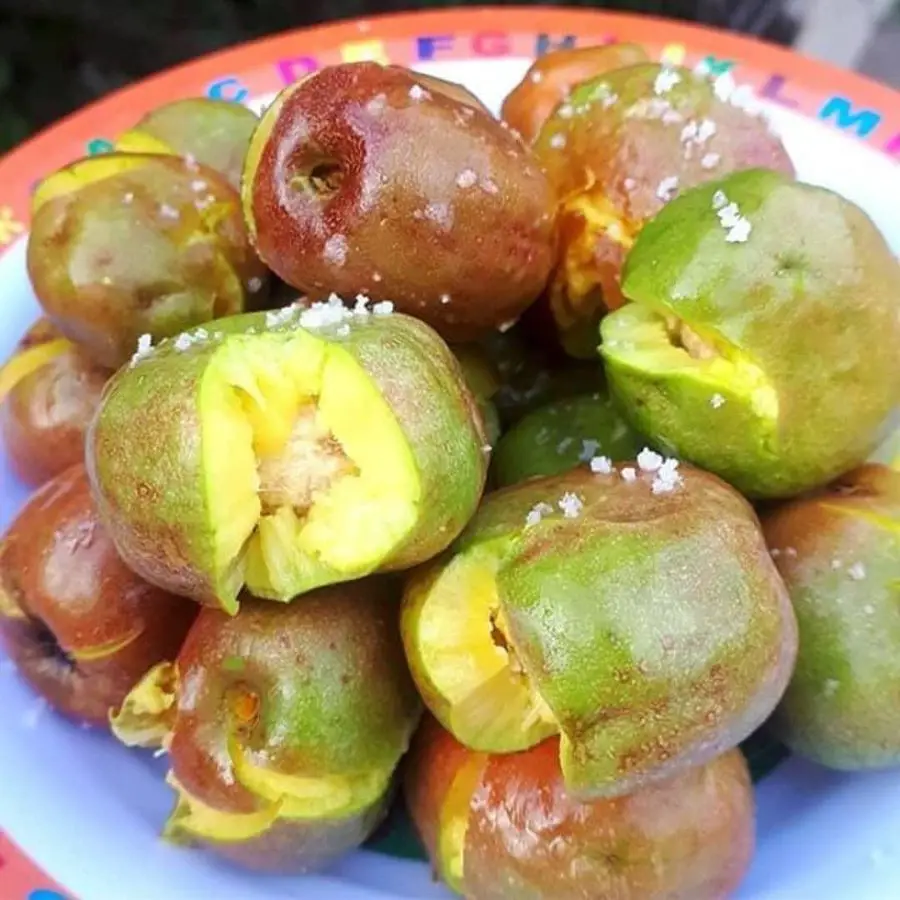
Azucaron Jocote
Jocote Azucaron has a green peel and a sugary taste the entire time. Azucaron Jocote has a round to flattened shape and is smaller than Baron. Azucaron, just like Baron Jocote, grows from February to the end of April; for that reason, it is also called summer Jocote.
Corona Jocote
The Jocote Corona or winter Jocote harvest months are in the middle of the rainy season or winter, from late July to October. This Jocote grows at high altitudes around volcanic areas such as Cerro Verde and San Vicente Volcano. It is common to find Corona Jocote trees around coffee farms.
Corona Jocote has a very sweet taste and a large seed with little edible pulp. This Jocote has a distinctive peel mixed with red, green, and bright yellow colors.
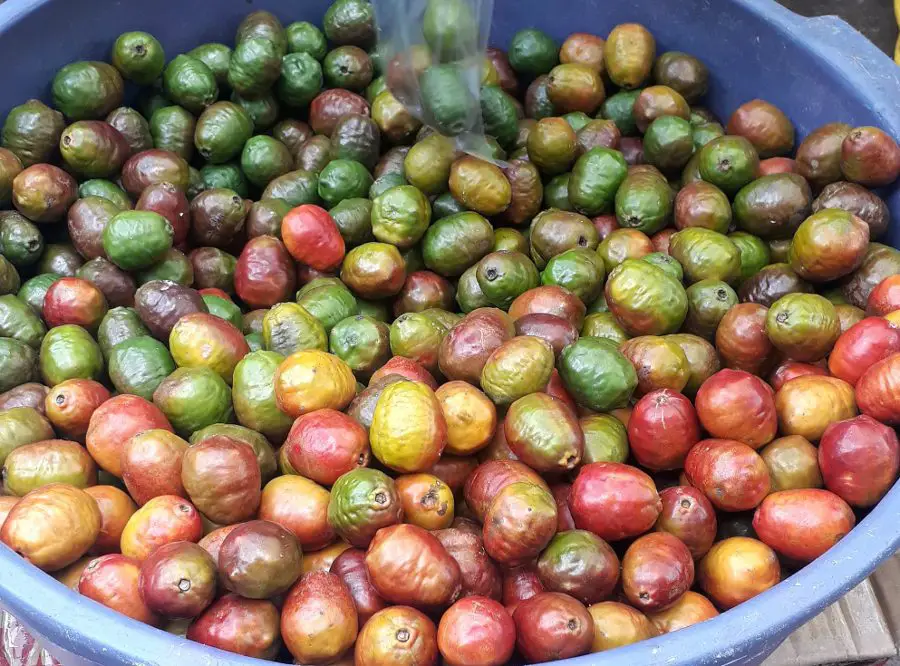
Los Nances
Nance is a fruit of El Salvador, available from July through August. This small fruit has a distinctive sweet flavor when ripe and is eaten raw. Los Nances are also used to make different dishes, such as with honey “Dulce de Nances.”
By the way, Nances are also used to produce a traditional local alcoholic drink called “Licor de Nance.”
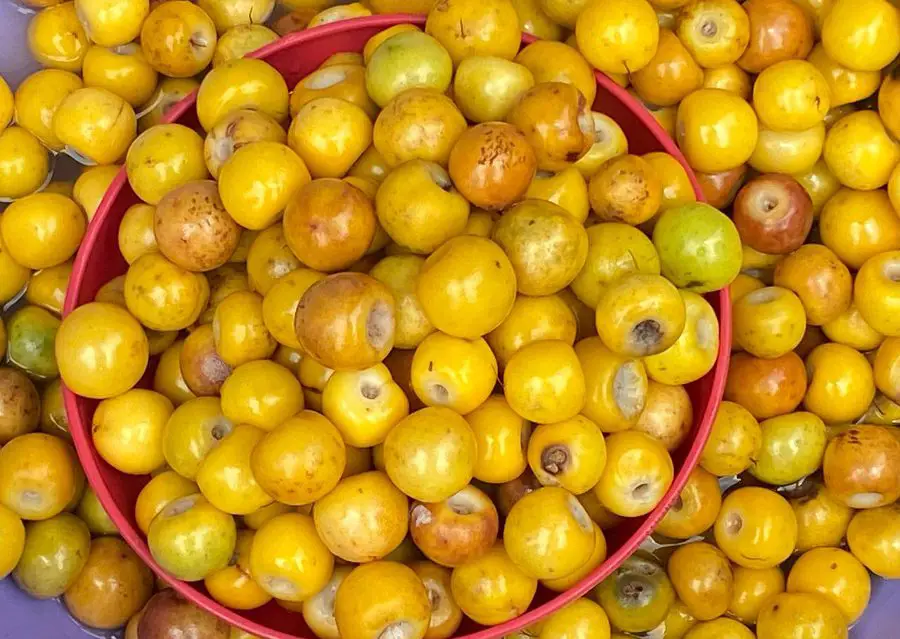
Los Mamones
Los Mamones is a tangy tropical Salvadoran fruit from El Salvador. This fruit is small, green, and round. It can measure between two and five centimeters in diameter.
Inside the fruit, you will find a salmon-colored edible part that covers its seed. This fruit, also known as Mamoncillos, comes in two flavors. One is sweet, and the other is a bit sour. It is like a mixture of lime and lychee.
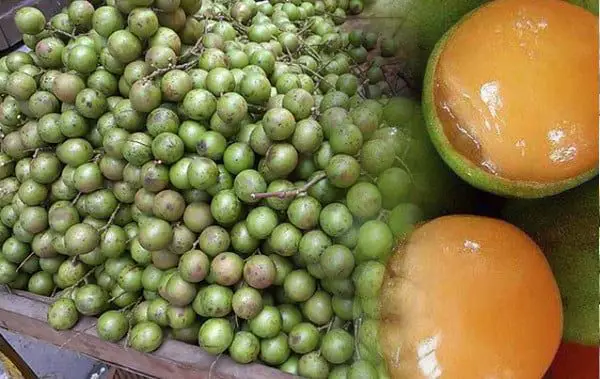
Los Marañones
Marañones is a juicy fruit that has a sweet-acid taste. This typical Salvadoran fruit can be eaten raw or made as tropical juice with water and sugar. In El Salvador, you will find four types of Marañones, red, orange, pink, and yellow; the taste for each is slightly different.
Roasted Marañon seeds (cashew nuts) are a popular snack available during the fruit season. Additionally, some Salvadorans use this fruit to make fermented homemade alcoholic drinks.
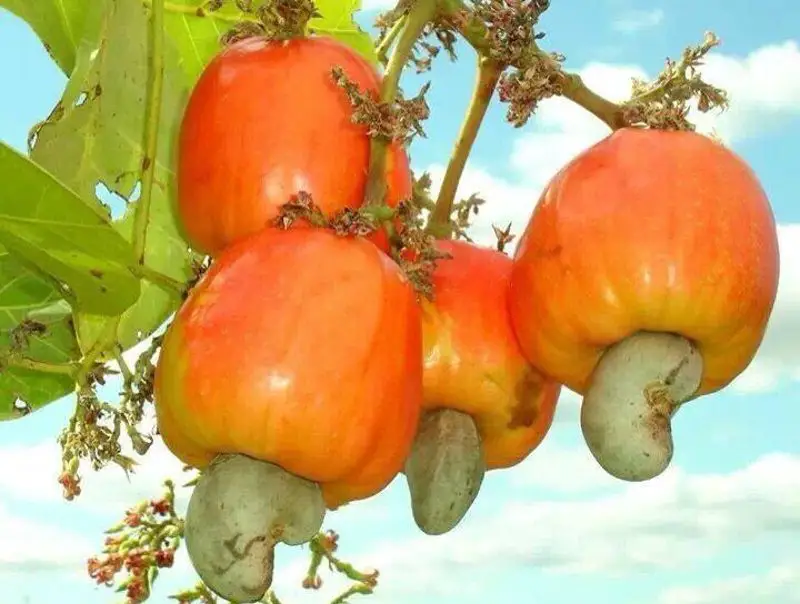
Las Guayabas
In El Salvador, Guayabas are almost as famous as Mangos. You can find Guayaba trees all over the country. This fruit is available the entire year, but the production is smaller during the dry season or summer.
The older generation eats Guayabas as is, including the fruit skin and seeds. However, the younger generations like to eat it in slices with salt, hot sauce, and lemon. On a side note, Guayaba leaves are used in many home remedies; one particular use is to reduce high fevers.
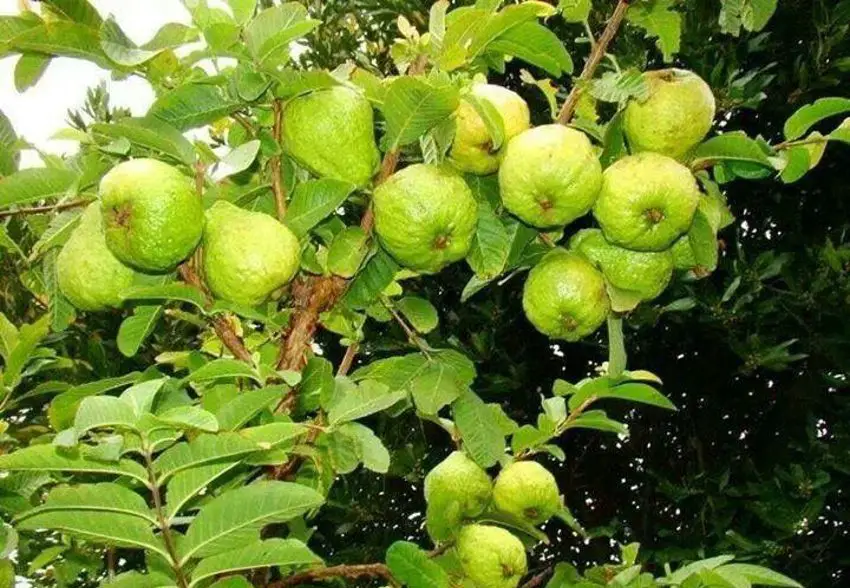
Los Zapotes
Zapotes are a common fruit in El Salvador, especially in rural areas of the country. The Zapote fruit has an alluring unique smell, as well as an exquisite flavor.
The outside of the fruit has a soft dark-colored peel, and the inside, which is the edible part, has a color mix of orange and red.
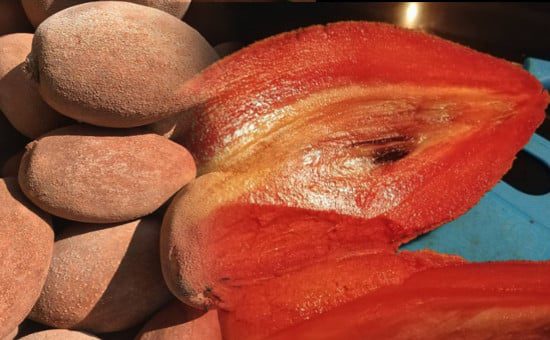
Las Paternas
Paterna tree grows in densely vegetated areas such as coffee plantations. The Paterna edible part is enclosed in a green pod, which varies in length and hangs from its branches.
The Paterna fruit has black seeds covered by a white, soft, and sugary coating. Most people eat the smooth white part of the fruit; however, the seeds can be eaten as well. The seeds are boiled in water until they become soft. Then, they are eaten traditionally with salt and lemon juice.
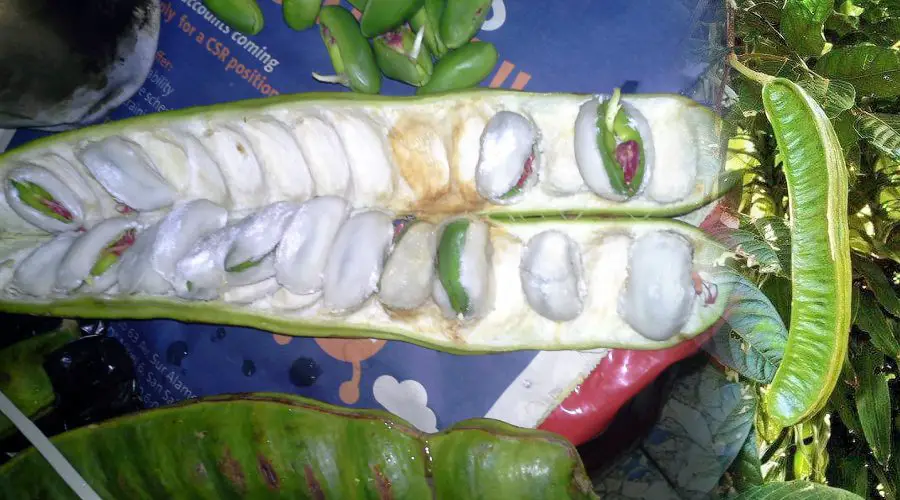
Los Mamey
Mamey is a tasty fruit of El Salvador that is eaten raw. Additionally, the fruit is used to make fresh cocktail juice or to make jelly for shaved ice. The Mamey fruit is sometimes confused with Zapotes, mainly because of its brown look and shape; however, unlike Zapotes, Mamey has a hard shell.
Getting to the edible part of the fruit is not easy; first, you need to remove the hard shell, and you will need a knife for this part. Then, you need to peel the tiny layer that covers the edible part; by the way, this layer is bitter, so don’t eat it.
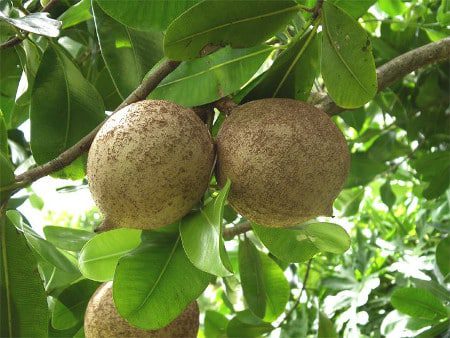
Los Pepetos
The Pepeto fruit has similarities to the Paterna fruit; both grow during the winter in densely vegetated areas. However, Pepetos are smaller, and of course, the taste is different. The fruit is in the middle of green pods, and when ripe, they are yellow. They are seeds covered by a white pulp with a sweet taste, which is the edible part.
Other Popular Fruits of El Salvador
El Salvador is home to many tropical fruits available all over its territory. The fruits listed above with more details are some of the most exotic and popular.
Other popular Salvadoran fruits are Nisperos, Arrayanes, Granadillas, Almendras, Caraos, and Tamarindos; these fruits are popular and are used in different products.
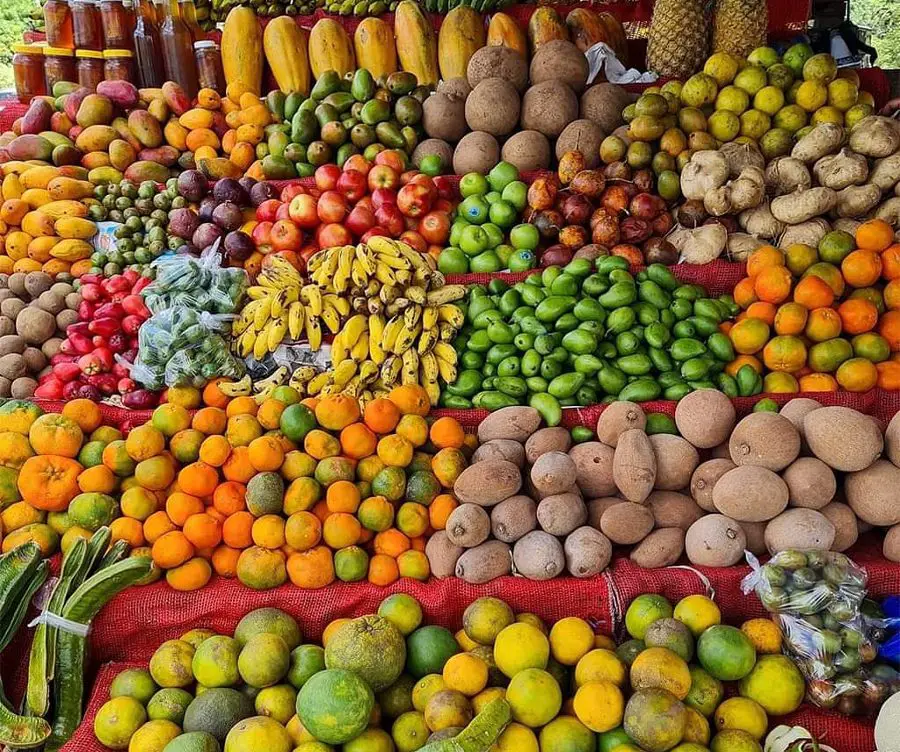
Fruits of El Salvador
In El Salvador, you will be able to find popular fruits such as mangos, watermelons, coconuts, and tamarinds, to name a few. The fruits listed above are well-known in the country and part of the country’s culture; however, visitors from other nations may not be familiar with all of them.
El Salvador has traditional foods, typical drinks, and exotic tropical fruits that you should try at least once. So, if you ever get the chance, head to a local street market and buy some of the non-traditional fruits. These fruits are popular with tourists and Salvadorans.

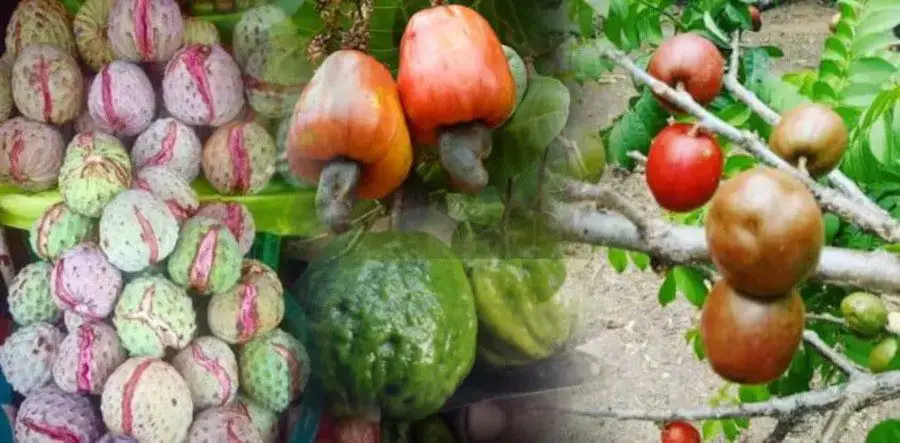 Salvadoran Fruits.
Salvadoran Fruits.


